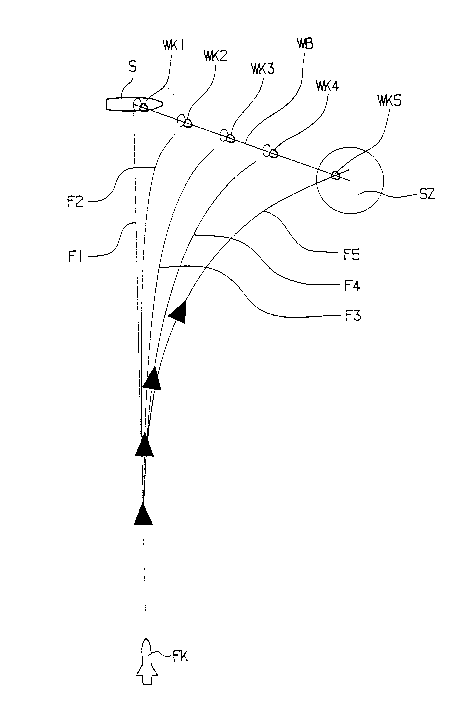Some of the information on this Web page has been provided by external sources. The Government of Canada is not responsible for the accuracy, reliability or currency of the information supplied by external sources. Users wishing to rely upon this information should consult directly with the source of the information. Content provided by external sources is not subject to official languages, privacy and accessibility requirements.
Any discrepancies in the text and image of the Claims and Abstract are due to differing posting times. Text of the Claims and Abstract are posted:
| (12) Patent Application: | (11) CA 2160831 |
|---|---|
| (54) English Title: | METHOD FOR PROTECTING OBJECTS, ESPECIALLY SHIPS, THAT EMIT A RADIATION, PARTICULARLY INFRARED RADIATION, AGAINST MISSILES |
| (54) French Title: | METHODE POUR PROTEGER DES OBJETS RAYONNANTS, LES NAVIRES PAR EXEMPLE, QUI EMETTENT PLUSIEURS RAYONNEMENTS, NOTAMMENT INFRAROUGE, CONTRE LES ATTAQUES DE MISSILES |
| Status: | Deemed Abandoned and Beyond the Period of Reinstatement - Pending Response to Notice of Disregarded Communication |
| (51) International Patent Classification (IPC): |
|
|---|---|
| (72) Inventors : |
|
| (73) Owners : |
|
| (71) Applicants : |
|
| (74) Agent: | G. RONALD BELL & ASSOCIATES |
| (74) Associate agent: | |
| (45) Issued: | |
| (22) Filed Date: | 1995-10-18 |
| (41) Open to Public Inspection: | 1996-04-22 |
| Availability of licence: | N/A |
| Dedicated to the Public: | N/A |
| (25) Language of filing: | English |
| Patent Cooperation Treaty (PCT): | No |
|---|
| (30) Application Priority Data: | ||||||
|---|---|---|---|---|---|---|
|
A method for protecting an object such as a ship emitting radiation
against a missile equipped with an intelligent homing head for sensing the radiation
has the steps of launching a diversionary projectile body away from the object and
of dispersing the projectile body at a removed location to form a dummy target
cloud. It has the further interposed step of activating a radiation means on theprojectile body immediately after launching that body. The radiation means radiates
an energy form corresponding to the energy form from the later dummy target cloud,
and continues to radiate that energy form until the dummy target cloud has formed
and built to a sufficient level. A series of projectile bodies may be launched with a
temporal and/or spatial offset, creating a continuous diversionary radiation path.
Note: Claims are shown in the official language in which they were submitted.
Note: Descriptions are shown in the official language in which they were submitted.

2024-08-01:As part of the Next Generation Patents (NGP) transition, the Canadian Patents Database (CPD) now contains a more detailed Event History, which replicates the Event Log of our new back-office solution.
Please note that "Inactive:" events refers to events no longer in use in our new back-office solution.
For a clearer understanding of the status of the application/patent presented on this page, the site Disclaimer , as well as the definitions for Patent , Event History , Maintenance Fee and Payment History should be consulted.
| Description | Date |
|---|---|
| Time Limit for Reversal Expired | 1999-10-18 |
| Application Not Reinstated by Deadline | 1999-10-18 |
| Deemed Abandoned - Failure to Respond to Maintenance Fee Notice | 1998-10-19 |
| Application Published (Open to Public Inspection) | 1996-04-22 |
| Abandonment Date | Reason | Reinstatement Date |
|---|---|---|
| 1998-10-19 |
The last payment was received on 1997-10-02
Note : If the full payment has not been received on or before the date indicated, a further fee may be required which may be one of the following
Please refer to the CIPO Patent Fees web page to see all current fee amounts.
| Fee Type | Anniversary Year | Due Date | Paid Date |
|---|---|---|---|
| MF (application, 2nd anniv.) - standard | 02 | 1997-10-20 | 1997-10-02 |
Note: Records showing the ownership history in alphabetical order.
| Current Owners on Record |
|---|
| BUCK WERKE GMBH & CO. |
| Past Owners on Record |
|---|
| NORBERT WARDECKI |